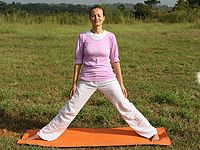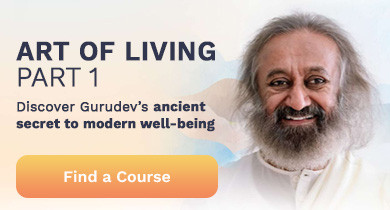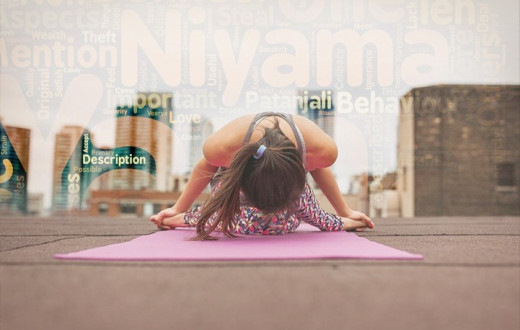By Sejal Shah
Warrior pose, or Virabhadrasana, is one of the most powerful poses in a yoga routine. Channel your inner strength, courage, and poise with this dynamic posture!
Warrior pose, or virabhadrasana (veer-aa-ba-DRA-SUN-aa), is a powerful yoga pose that builds strength in the arms, shoulders, thighs, and back. It’s named after a fierce warrior, Virabhadra, who symbolizes our ability to overcome ego and ignorance. This standing yoga pose’s name is derived from the Sanskrit words Vira, meaning warrior, bhadra, meaning good or auspicious, and asana, meaning pose. The purpose of practicing warrior pose is primarily to increase the flexibility in the hips and strengthen almost your entire body.
Level of difficulty: Beginner
Warrior pose variations
Step-by-step instructions
There are three variations of warrior pose that build strength and balance in the body. Here are step-by-step instructions for all three.
Warrior One:
Stand up straight in mountain pose (tadasana) with your feet hip-distance apart and your arms by the sides of your body. Breathe deeply and evenly, calming your mind and bringing it to the present moment. Draw your awareness inward.
Separate your legs wide apart at a distance of at least three to four feet.
Turn your right foot out at 90 degrees and your left foot in at 15 degrees, or keep it straight with toes pointing forward.
Align the heel of your right foot with the center of your left foot.
Turn your upper body to the right.
Breathe in and reach your arms up, keeping your hands shoulder-distance apart and your palms facing each other. Allow your shoulder blades to open out and up slightly. Keep your gaze forward. You may bring your palms together and look up at your thumbs.
Exhale, and with your arms raised, bend your right knee and bring your right thigh parallel to the floor, feeling the stretch in your thigh and hip.
Keep your right knee above your right ankle. Make sure that the knee does not extend out beyond the ankle. Keep the back foot grounded and the back leg straight without bending at the left knee.
Stay in the pose for about five to ten breaths. If you like, you can extend your spine slightly backward like in a crescent moon. Breathe evenly.
Breathing in, straighten your right knee. Breathing out, bring your arms down.
Repeat the pose on the other side.
Warrior Two:

Repeat steps 1-4 from warrior one pose as listed above.
Breathing in, lift both arms parallel to the ground at shoulder height with your palms facing upwards.
Turn your head to the right, and gaze at the tip of your right middle finger.
Breathing out, bend your right knee and bring your right thigh parallel to the floor, keeping your upper body straight. Hold the pose with the determination of a fierce warrior. Invoke the valor and courage within. Be a yoga warrior that is ready to face the challenges of your life fearlessly, with grace and poise.
Breathing in, extend your right leg and come up.
Breathing out, lower your hands to your sides.
Repeat the posture on the other side.
Warrior Three:
Stand in tadasana (mountain pose). Step your left foot about two feet behind you. Balance the weight evenly between both feet.
Inhaling, bring your palms together over your head and interlock your fingers. Release your index fingers so they point upward.
Breathing out, keep your right foot grounded and firm, and shift all your weight onto your right leg. Lift the left leg up behind you, and stretch your arms and upper body forward, bringing them parallel to the ground. Hold the pose and breathe evenly.
Stretch your arms toward the front wall and your left leg toward the back wall. Make a gentle effort to keep your hips aligned on one plane.
Hold the posture for a few breaths.
To release, breathe in and slowly lower the left leg to the floor while bringing your torso up. Exhale, and relax your arms to the sides.
Repeat on the other side.
Benefits of warrior pose
Strengthens and tones the arms, core, thighs, legs, and lower back
Encourages proper spinal function
Improves balance
Increases stamina
Enhances focus and willpower
Releases tension from tight shoulders
Brings auspiciousness, courage, grace, and peace
Virabhadrasana is especially beneficial for those with sedentary lifestyles or desk-jobs. It can also benefit pregnant women in their second and third trimesters, provided they have been attending yoga classes consistently. However, if pregnant, consult your doctor before doing this yoga posture.
Precautions and contraindications
Avoid practicing virabhadrasana if you suffer from any of these conditions:
High blood pressure
Diarrhea
Knee, neck, or shoulder pain
Spinal conditions
Arthritis
Ankle injury
Practice warrior pose only after consulting your doctor if you have experienced a spinal injury or disorder, or have recently recovered from chronic illness.
If you are experiencing severe neck pain, keep the head in a neutral position in warrior two.
Modifications and variations
Using props
Practice warrior pose up against a wall if you are pregnant or have difficulty balancing. Also, feel free to use props like chairs and blocks.
Begin with downward-facing dog
From downward dog you can step your right foot forward into a lunge, then raise your arms to come into warrior one or two.
Humble warrior pose (Baddha virabhadrasana)
Humble warrior pose is a forward bend that requires stability and flexibility throughout the body, especially in the hips, legs, shoulders, and back.
Peaceful warrior pose or reverse warrior pose (viparita virabhadrasana)
Peaceful warrior pose is usually practiced in vinyasa classes as a transitional pose between warrior two and downward-facing dog or chaturanga. To come into this pose from warrior two, reach the front arm up and back in a gentle backbend, and let the back arm rest on the back leg.
To increase the challenge
For a deeper stretch in the back thigh, widen your stance and deepen the bend of your front leg.
Preparatory poses and follow-up poses
Chair Pose | Utkatasana (preparatory)
Sun Salutation | Surya Namaskar (preparatory)
Standing Forward Bend With Feet Apart | Prasarita Padahastasana (follow-up)
Triangle Pose | Trikonasana (follow-up)
Learn more
Browse our entire yoga pose library, and learn more about each yoga pose in detail.
While a regular yoga practice can result in improved health, it is not a substitute for medical treatment. If you have a medical condition, consult your doctor before beginning the practice of yoga. Yoga is best learned and practiced with a trained and certified yoga instructor. Check out the Art of Living Yoga Studio to get started.
Take your asana practice to the next level
When you follow-up your asana practice with powerful SKY Breath Meditation, you will take your practice to the next level. Join us for a free online session with a live instructor, and experience the power of guided breathwork and meditation now.
Sejal Shah, E-RYT 500 Sri Sri Yoga Teacher, YACEP, C-IAYT, Meditation Teacher, SKY Instructor, NYU Post Graduate Medical School approved Yoga-CME retreat facilitator, Mind-Body Wellness Writer, Homeopath. She can be followed on YouTube, Instagram, Twitter, and Facebook.





























